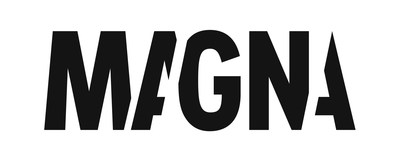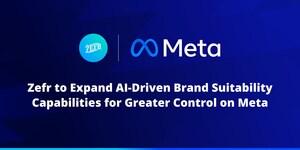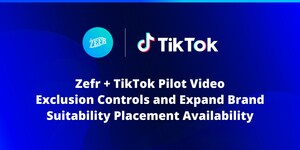New Study From Zefr And MAGNA Reveals How Brands Can Effectively Reach Consumers On YouTube Without Jeopardizing Their Privacy Or Relying On Audience Data
Commissioned in response to current advertiser concerns, study finds brands who employ a content targeting strategy on YouTube are able to safely and credibly increase favorability and drive purchase intent among desired audiences, over other targeting methods
LOS ANGELES, May 1, 2018 /PRNewswire/ -- Zefr, a technology company that provides content targeting solutions for brands advertising on YouTube, today announced the results of an in-depth study conducted by MAGNA the intelligence, investment and innovation unit within IPG Mediabrands, and IPG Media Lab, the media futures and advisory arm of IPG Mediabrands, which examined if brands can effectively reach consumers on YouTube without relying on audience data. Commissioned in response to advertisers' mounting concerns around data, safety and privacy on the platform, the study captured the reactions of over 3000 consumers as they were exposed to the same advertisements delivered via three popular methods: content targeting, demo targeting and channel targeting.
The study revealed content targeting over all other methods, to be the most effective approach for brands looking to capture the interest of desired audiences. It also found content targeting to be an especially formidable foe to ad skipping, which is one of the industry's most persistent and widespread obstacles. In fact, ads that were viewed as being relevant to content were less likely be skipped on mobile devices. According to the study, consumers who were fed ads via content targeting on mobile achieved up to 34 percent higher completion rates over other targeting methods, and they found content targeting to be up to 33 percent less intrusive than channel or demo targeting as well.
"The way advertisers operate on platforms like Facebook and YouTube is under more scrutiny than ever before," said Rich Raddon, co-CEO of ZEFR. "Between questions on audience data collection, brand safety concerns and legal challenges like GDPR, brands are in need of a new approach that will help them reach the right audiences in a safe and suitable way. We've long been big believers in the power of content targeting at the video level, and how it can help brands effectively reach consumers without relying on audience data or violating their privacy, but this study takes our information to a whole new level. It is clear that content targeting is the most powerful and effective approach for brands advertising on YouTube available in the marketplace today."
The study, conducted over the first quarter of 2018, tested how content targeting (when a video advertisement is directly aligned with content at the video level), demo targeting (when a video advertisement uses demographic signals to reach desired audience) and channel targeting (when a video advertisement is run on popular YouTube channels) performed across campaigns from Hulu, Jeep and a major CPG brand.
Yet, while the study points to consumers' appreciation of content targeting, it also shows that when ads are misaligned with content, it can annoy desired audiences. In fact, some respondents went so far as to say that when they viewed an ad that seemed misaligned, they felt the advertiser didn't know what they were doing and that they didn't care about their potential customers. And, worse yet, when ads ran in front of misaligned content, it could easily become detrimental to brand perception.
To help ensure brands align with the right content and meet their brand safety requirements, Zefr's unique video-level content targeting solution enables advertisers to have a highly curated YouTube environment, in which every video is vetted for safety. This video-level, content-first solution differs from channel level solutions, which traditionally evaluate channels based on their past history, popularity and subscriber count. As an added safety measure, Zefr also leverages this video-level approach to measure the suitability of entire channels for brands. This ensures that disreputable or toxic channels are not included in Zefr's inventory. Thousands of toxic channels, and all of their videos, have been deemed ineligible for Zefr's curated whitelist solution.
For more information about Zefr and the company's approach to content targeting, please visit http://zefr.com.
About Zefr
Zefr is a technology company that provides content targeting solutions at scale for brands advertising on YouTube. Unlike other YouTube advertising solutions that focus on audience, Zefr's advanced technology dissects content at the video level to ensure every brand message is delivered in the right context and against the right premium content every time. This in turn ensures that all brand messages are not only safe but are brand suitable. As a result of its unique offering, the company has built up a robust client roster that includes major brands across retail, automotive, beauty, entertainment, music, and more. The company is headquartered in Los Angeles, California, with offices in New York, and Chicago. For more information, go to:http://zefr.com.
About MAGNA
MAGNA is the centralized IPG Mediabrands resource that develops intelligence, investment and innovation strategies for agency teams and clients. We utilize our insights, forecasts and strategic relationships to provide clients with a competitive marketplace advantage.
MAGNA harnesses the aggregate power of all IPG media investments to create leverage in the market, negotiate preferred pricing and secure premium inventory to drive maximum value for our clients. The MAGNA Investment and Innovation teams architect go-to-market investment strategies across all channels including linear television, print, digital and programmatic on behalf of IPG clients. The team focuses on the use of emerging media opportunities, as well as data and technology-enabled solutions to drive optimal client performance and business results.
MAGNA Intelligence has set the industry standard for more than 60 years by predicting the future of media value. The MAGNA Intelligence team produces more than 40 annual reports on audience trends, media spend and market demand as well as ad effectiveness.
About IPG Media Lab
Part of the Interpublic network, the IPG Media Lab identifies and researches innovations and trends that will change the media landscape and how brands engage with their audiences. Since 2006, the Lab has worked with our clients and with industry partners who can help them best adapt to disruptive change. Its expertise, resources and consulting services also help to inform the learnings, strategies and business outcomes of all Interpublic agencies. For more information, please visit www.ipglab.com or follow @ipglab.
SOURCE Zefr
Related Links
WANT YOUR COMPANY'S NEWS FEATURED ON PRNEWSWIRE.COM?
Newsrooms &
Influencers
Digital Media
Outlets
Journalists
Opted In








Share this article